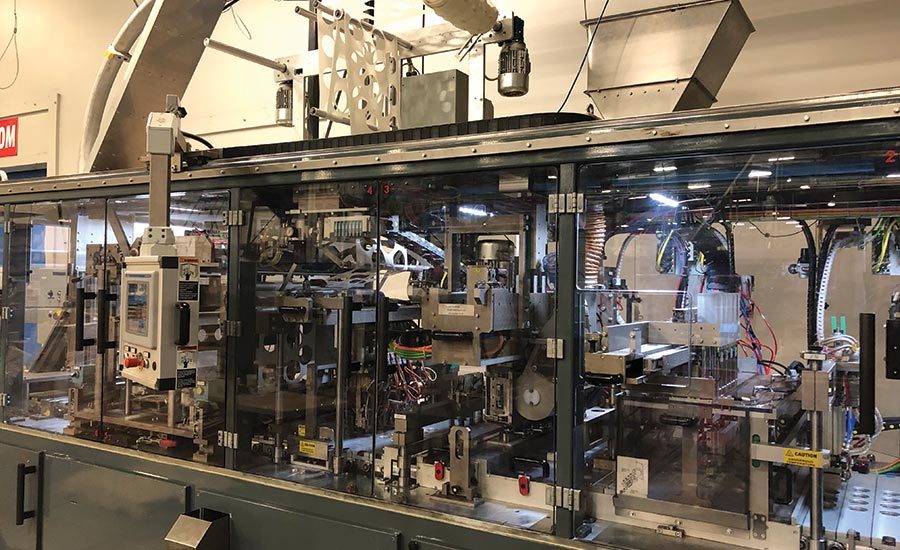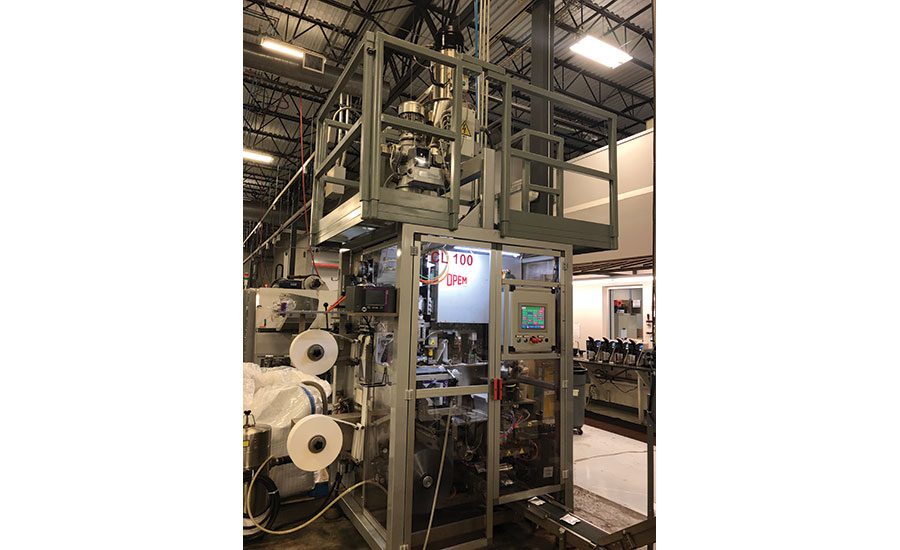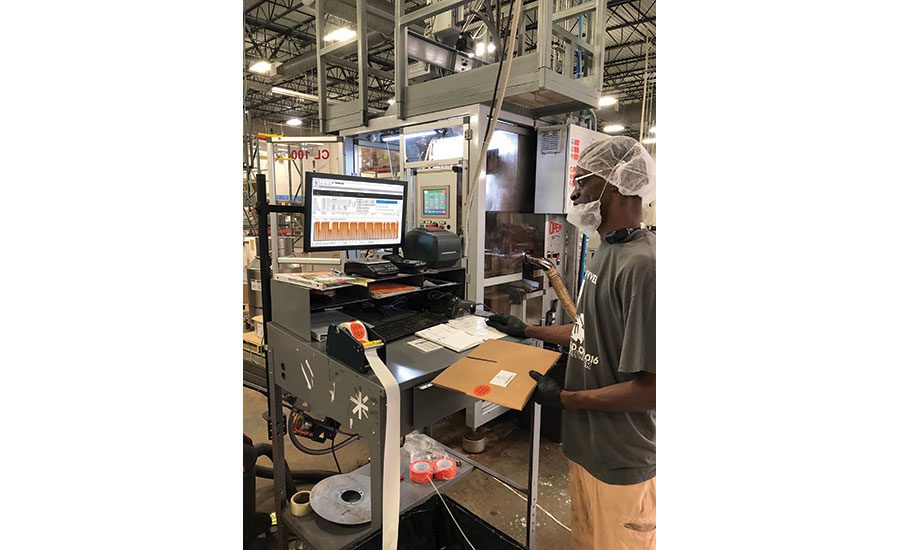It all started with 400 square feet in New Orleans.
That’s not a lot of room to do much of anything, much less pack and ship single-serve coffee pods. But that’s how Pod Pack started in 1996, and the company’s bet on single-serve coffee being a growing market quickly paid off. Step by step the company grew, adding a machine here and a machine there as capacity needs demanded, moving to larger spaces as necessary, ultimately landing in its 75,000-square-foot facility in Baton Rouge, La.
That initial growth was accomplished through manual processes, record-keeping and inventory tracking. But as growth continued, those solutions became cumbersome and inefficient, threatening the company’s plans for continued growth.
“We really needed a single source solution to give us full traceability and accountability in the supply and manufacturing process,” says Pod Pack CFO Marion Gray. “We just reached the point that Excel, Access and QuickBooks didn’t cut it anymore.”
Enter the DELMIAworks manufacturing ERP system from Dassault Systèmes. Pod Pack moved into the new facility in January 2018 and turned to DELMIAworks soon after, implementing the system by September of that year. The company has seen a number of benefits from the new system, including:
- Doubling business without doubling head count
- Cutting financial closing time from 25 days to three
- Hourly inventory updates
- Recall and traceability reports in minutes instead of hours
The system paid immediate dividends, and one of the most pronounced examples of it was earlier this year when the COVID-19 pandemic hit. Among others, Pod Pack serves retail, hospitality and foodservice markets, and all were disrupted in different ways. Trying to meet those sudden shifts under the old system would have been a major challenge, says purchasing and inventory manager Becky Wethey.
“Oh, my gosh,” says Wethey, laughing. “With the old system it would be all hands on deck working to ensure we had the needed materials. Especially with the dramatic growth in retail demand that we’ve experienced this year.”
But the pandemic is only one example of how Pod Pack has benefited from moving to the ERP system. It’s been nothing short of a fundamental revamping of how the company operates, and it has Pod Pack anticipating future growth instead of fearing it as a challenge that will strain the company’s resources.
Every department at Pod Pack has a story to tell about how the ERP system has changed its way of operating for the better. It all starts when coffee comes in the door.
Supply Chain Successes
Pod Pack produces coffee under a number of different brand names and private labels. The form factor also varies, with much of the company’s business being single-service K-Cup style pods for retail and soft pods, like you might see in a hotel or office coffee setting.
Customers ship their whole bean coffee to Pod Pack, who then grinds, packages and quality tests the finished products. They guarantee a two-week turnaround from receipt of coffee to production and shipping and, in some cases, can turn it around even faster. However, to achieve these fast turnarounds, the coffee has to be ordered well in advance, says Wethey. Some of the inventory has 16-week lead times, while others might be as short as 4 to 6 weeks. Keeping track of that under the old system was a labor-intensive process, but now, the system allows for setting min-max levels and reorder points to automate the process.
Overall, the new system helps Pod Pack carefully manage coffee inventory to ensure sufficient levels to meet demand without waste, which is important because coffee starts to oxidize and go stale past a certain point.
“The quick turnarounds have definitely played an important role in our growth over the past year and we owe much of this to our partnership with DELMIAworks. Being able to better manage inventory levels to meet demand while also being more financially responsible is a win-win for our customers and Pod Pack,” says Wethey.
“Being able to better manage inventory levels to meet demand while also being more financially responsible is a win-win for our customers and Pod Pack.”
–Becky Wethey
In addition to meeting fast turnaround times and better managing the quality and freshness of raw materials, the ERP system streamlines the workflow, says Mark Modenbach, VP of manufacturing. As he points out, managing inventory was a near constant process under the old system, and it would consume basically half of each month just to reconcile inventory. Now, the counts still have to be done, but the reconciliation time has been cut dramatically.
“Now we are more efficient and have accurate inventory insights at the push of a button,” says Modenbach. “We can tabulate the data straight into the database with all the handhelds and quickly and easily have detailed insights that help us better manage our business. Speed and accuracy have improved, which has also improved morale because what was once a timely process is now completed in a day.”
In addition to having a better handle on existing inventory, the system allows Pod Pack to be more precise and responsive to what it needs for a given order. If the company doesn’t have enough product to run an order, then the ERP system’s tracking and reporting capabilities allow it to immediately know how much Pod Pack needs to request from the customer.
“As soon as it hits the dock, the production team knows about it and they can start running it,” says Modenbach. “It’s led to a lot quicker decisions and made us faster than we already were to be able to respond to customer needs.”
The inventory management and ability to quickly respond have been especially important during the ongoing pandemic. When it initially hit, Pod Pack faced the same challenge as many other food and beverage processors: Retail demand surged as foodservice and hospitality demand disappeared. But because the system allows Pod Pack to respond immediately instead of forcing a delay due to cumbersome record keeping and supply chain management, the company was able to pivot to meet changing customer demands.
These changes in customer demands quickly became apparent as retail demand surged, which meant replacement orders were needed on short notice. Because Pod Pack now has more accurate insights into inventory levels in real time, they were able to adjust quickly. Inventory replacement orders were generated which prevented gaps that would’ve slowed down production. The company was able to pull up the orders for each vendor and make decisions on what orders to keep, eliminate or modify based on demand.
As Wethey puts it, the company was able to react quickly because of better insights into inventory and demand.
“We were able to quickly and efficiently adjust our product schedule to meet rapidly changing customer demands. It was a really smooth transition, we didn’t have any real big hiccups.”
Manufacturing improvements
Some of Pod Pack’s manufacturing processes are still reliant on a manual process. The company grinds whole-bean coffee, and the ground coffee is then brought to the line and manually moved to packaging. For maximum quality and freshness in our single-serve soft pods, coffee needs to be packaged and nitrogen-flushed in under three minutes from the time it is ground; for K-cups, the freshly ground coffee needs to breath for 24 hours in a de-gassing phase. This is a critical step in the K-cup manufacturing process because, otherwise, the gasses may cause the cups to burst
The advantages of the ERP system are still readily apparent in the production process. Modenbach says that under the previous system, they would sometimes have mistakes where the wrong raw materials were brought to the production line. Now, however, having the tracking and production scheduling capabilities of DELMIAworks has helped eliminate those errors, because the production scheduling tool clearly lays out the upcoming orders and the needed materials.
“Having an electronic system that’s checking us each step of the way has really improved and simplified the process flow,” says Modenbach.
The system pushes out production information to each line so that operators and material handlers know what to expect next and can double-check materials to ensure they are correct. The system also produces data for each step of the process, so it can be reviewed for better understanding of how the process is working and looking for areas of improvement.
The next step is to turn that data into a real-time management tool, says Modenbach.
“We’ve barely scratched the surface on real-time, which means tracking our products as they are coming off the line,” says Modenbach. “We’re very good with our down time, and we’re using that to analyze our losses and come up with fixes to try to continually improve. We’re now starting to look into dashboards to see how that can help with getting information to the production floor in real time so they can more quickly assess losses and reflow the work.”
The company’s two-week guarantee on turnaround time means there’s not much room for error, says Gray.
“For us to be able to do that,” says Gray, “we have to clearly understand what’s our capacity, what’s our manufacturing schedule look like, so that when a customer calls and says they have a change—‘I need K-Cups, I need espresso pods’—we can really help them understand when we need their materials on our dock so that we have enough time to get it turned within a two-week window to get it back to them.”
Accepting the changes
Any time you overhaul a process, there is the potential for resistance or pushback based on “but that’s the way we’ve always done it.” When you overhaul your entire operation by moving from spreadsheets and manual inventory counting to implementing an ERP system, the potential for resistance increases even more.
Pod Pack was no different, says Michael Gould, manager—ERP systems. Gould was responsible for overseeing the initial implementation, and the first hurdle was getting employees to accept the new normal.
To address that, Gould had to first overcome a bit of a language barrier. As is the case with most companies, Pod Pack has its own internal lingo that can be confusing to newcomers. So his first step was to make sure that everyone was on the same page with understanding the terminology of the new system. As one example, the term “PO” would often be used not only to describe the form a customer would be given for a purchase, but also as a shorthand for the finished product. So, even a shift as simple as using the term “lot number” for finished products was an adjustment for people who were used to the old system.
Support from upper management was critical, as was Gould’s experience with business systems. But where it really started to click was when operators started seeing the benefits. They could start seeing the production data and understand how much they had produced during a shift. The company also implemented a work-order system that tells operators what they’re supposed to run and what materials they need, which helped streamline the process and add an additional safeguard against errors.
“Real-time has been the best thing,” says Gould. “It allows us to perform quick inspections on quality. Now, we’re starting to dig down even more during production and better understand errors or non-conforming things that happen. Real-time has really helped us reduce the paperwork.”
DELMIAworks and Pod Pack’s change management
When a company implements a major system upgrade, change management becomes a critical piece of the puzzle. Pod Pack was no different.
Implementing the ERP system was a significant change from the old way of doing things, and that naturally leads to employee resistance or needing to adjust on the fly to ensure everyone understands what they should be doing and how they should be doing it. According to Louis Columbus, principal, DELMIAworks (formerly IQMS), part of the Dassault Systèmes Works family, Pod Pack succeeded by focusing on how much the new system would empower employees to do their jobs in a better way.
“They painted a picture of ‘this is who we could be, and this is how fast we will grow, and this is how proud you can be of the products you’re producing every day, by using this data,’” says Columbus. “Pod Pack did an amazing job of leading by example, showing employees how the system is designed to empower them with the data and insights they need to excel. The key to successful change management is believing the best in every employee and tailoring any system to help them learn more, achieve more and ultimately earn more.”
Getting that level of buy-in from employees is not easy, and it requires clear, forthright communication from senior management about what the new system can offer to employees. Columbus emphasizes leadership has to believe in the value of the system and be completely committed to its success, clearly showing how and why employees’ contributions are key to its success.
“Leaders can replace fear and resistance to change with excitement about the future by being transparent with employees and explaining how they are key to the company succeeding – that they matter a lot to the success of the company, and the system is just part of that strategy,” Columbus says. Pod Pack was able to do that, and the dramatic transformation in the company’s capabilities is proof of a successful strategy, says Columbus.
“To get to this level of performance, everybody has to believe in it, and it really truly has to be a team effort,” he says. “The best of all: The customers are satisfied.”
What the future holds
Implementing the ERP system has transformed how Pod Pack operates, but they’re not stopping there. The company has goals for future projects to continue improving operations, quality and inventory management. The success, to date, has also created an atmosphere where employees embrace change and are excited about new technology.
“One thing that we’ve been pleasantly surprised with is the adoption and the ability of everybody working on the floor to learn the system,” says Gray. “It’s not just operators who know how to use the system. It’s not just managers. The way our system is designed, it’s every person from the machine operator to the material handler to the people moving pallets around, they all have some tie-in to the ERP system and every one of them is using it on a daily basis. It has really been fantastic to see.”
From Modenbach’s perspective, the next step is to expand the ways that employees can use information to meet their job requirements. Dashboards to help provide more production data are one goal for the near future. Two others are using a mobile system for quality checks to avoid being tethered to a computer and a document control module to ensure record keeping is as good as possible and make sure the team is always working off the most current and accurate information.
Those goals, while smaller components of the overall puzzle than the initial implementation was, could still be challenging if employees are reluctant to learn new ways of doing things or are afraid of change. Thanks to the company realizing the importance of ensuring employees are on board, Modenbach feels good about where the company is and where it’s headed.
“I’m very fortunate that we had the right group with us when we made the change. The team from DELMIAworks really facilitated a smooth transition,” says Modenbach. “And it’s been a blessing for us. The whole team is behind it, and you can see the advantages of it.”
For more information:
Pod Pack, www.podpack.com
DELMIAworks, www.iqms.com











